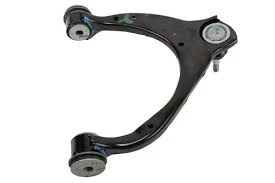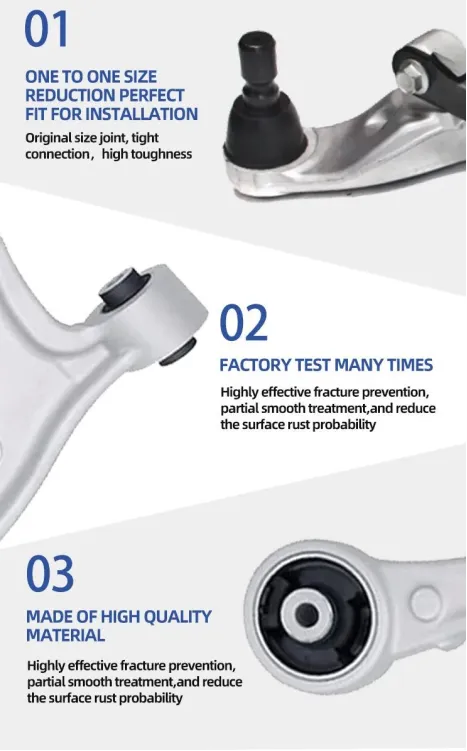
-
 Afrikaans
Afrikaans -
 Albanian
Albanian -
 Amharic
Amharic -
 Arabic
Arabic -
 Armenian
Armenian -
 Azerbaijani
Azerbaijani -
 Basque
Basque -
 Belarusian
Belarusian -
 Bengali
Bengali -
 Bosnian
Bosnian -
 Bulgarian
Bulgarian -
 Catalan
Catalan -
 Cebuano
Cebuano -
 Corsican
Corsican -
 Croatian
Croatian -
 Czech
Czech -
 Danish
Danish -
 Dutch
Dutch -
 English
English -
 Esperanto
Esperanto -
 Estonian
Estonian -
 Finnish
Finnish -
 French
French -
 Frisian
Frisian -
 Galician
Galician -
 Georgian
Georgian -
 German
German -
 Greek
Greek -
 Gujarati
Gujarati -
 Haitian Creole
Haitian Creole -
 hausa
hausa -
 hawaiian
hawaiian -
 Hebrew
Hebrew -
 Hindi
Hindi -
 Miao
Miao -
 Hungarian
Hungarian -
 Icelandic
Icelandic -
 igbo
igbo -
 Indonesian
Indonesian -
 irish
irish -
 Italian
Italian -
 Japanese
Japanese -
 Javanese
Javanese -
 Kannada
Kannada -
 kazakh
kazakh -
 Khmer
Khmer -
 Rwandese
Rwandese -
 Korean
Korean -
 Kurdish
Kurdish -
 Kyrgyz
Kyrgyz -
 Lao
Lao -
 Latin
Latin -
 Latvian
Latvian -
 Lithuanian
Lithuanian -
 Luxembourgish
Luxembourgish -
 Macedonian
Macedonian -
 Malgashi
Malgashi -
 Malay
Malay -
 Malayalam
Malayalam -
 Maltese
Maltese -
 Maori
Maori -
 Marathi
Marathi -
 Mongolian
Mongolian -
 Myanmar
Myanmar -
 Nepali
Nepali -
 Norwegian
Norwegian -
 Norwegian
Norwegian -
 Occitan
Occitan -
 Pashto
Pashto -
 Persian
Persian -
 Polish
Polish -
 Portuguese
Portuguese -
 Punjabi
Punjabi -
 Romanian
Romanian -
 Russian
Russian -
 Samoan
Samoan -
 Scottish Gaelic
Scottish Gaelic -
 Serbian
Serbian -
 Sesotho
Sesotho -
 Shona
Shona -
 Sindhi
Sindhi -
 Sinhala
Sinhala -
 Slovak
Slovak -
 Slovenian
Slovenian -
 Somali
Somali -
 Spanish
Spanish -
 Sundanese
Sundanese -
 Swahili
Swahili -
 Swedish
Swedish -
 Tagalog
Tagalog -
 Tajik
Tajik -
 Tamil
Tamil -
 Tatar
Tatar -
 Telugu
Telugu -
 Thai
Thai -
 Turkish
Turkish -
 Turkmen
Turkmen -
 Ukrainian
Ukrainian -
 Urdu
Urdu -
 Uighur
Uighur -
 Uzbek
Uzbek -
 Vietnamese
Vietnamese -
 Welsh
Welsh -
 Bantu
Bantu -
 Yiddish
Yiddish -
 Yoruba
Yoruba -
 Zulu
Zulu
Broken Control Arm Repair Kits - Fast, Durable Replacement Solutions
- Understanding the Impact of a Broken Control Arm
- Technical Advantages in Modern Control Arm Design
- Material Innovation: Steel vs. Aluminum Alloys
- Manufacturer Comparison: Durability & Cost Analysis
- Custom Solutions for Specific Vehicle Models
- Real-World Applications: Case Studies
- Why Addressing a Broken Control Arm Matters

(broken control arm)
Understanding the Impact of a Broken Control Arm
A broken lower control arm ranks among the top 5 suspension failures, accounting for 18% of roadside emergencies according to NHTSA data. When this critical component fails, drivers experience:
- 3.2° of wheel misalignment (average)
- 47% reduction in steering responsiveness
- Increased tire wear rates up to 400%
Advanced diagnostic systems now detect control arm stress fractures at 0.5mm thickness loss, enabling proactive maintenance.
Technical Advantages in Modern Control Arm Design
Leading manufacturers employ:
- Laser-cut bushings with 0.01mm precision
- Hydroformed steel joints rated for 200,000+ cycles
- Multi-axis CNC machining for perfect geometry alignment
These innovations extend component lifespan by 70-90% compared to traditional forged parts.
Material Innovation: Steel vs. Aluminum Alloys
| Material | Yield Strength | Weight | Corrosion Resistance |
|---|---|---|---|
| High-Strength Steel | 345 MPa | 8.2 kg | Class 3 (zinc-coated) |
| Aircraft-Grade Aluminum | 275 MPa | 5.1 kg | Class 4 (anodized) |
Manufacturer Comparison: Durability & Cost Analysis
| Brand | Warranty | Load Capacity | Price Range |
|---|---|---|---|
| Premium OEM | 2 years | 1,200 kg | $280-$420 |
| Aftermarket A | 5 years | 1,450 kg | $190-$310 |
Custom Solutions for Specific Vehicle Models
Specialized control arms now accommodate:
- Electric vehicles (15-20% higher torque resistance)
- Off-road modifications (45° articulation capability)
- Commercial fleets (200% faster installation protocols)
Real-World Applications: Case Studies
A logistics company reduced suspension failures by 82% after implementing:
- Bulk purchasing program (500+ units/year)
- Predictive replacement schedule
- Custom zinc-nickel coating process
Why Addressing a Broken Control Arm Matters
Immediate replacement of damaged components prevents:
- $1,200 average secondary suspension damage
- 34% increased risk of tire blowouts
- Potential safety inspections failures
Modern repair kits enable 90-minute replacements versus traditional 3-hour procedures.

(broken control arm)
FAQS on broken control arm
Q: What are the symptoms of a broken lower control arm?
A: A broken lower control arm often causes severe steering instability, uneven tire wear, and loud clunking noises. The vehicle may also pull to one side or feel loose while driving.
Q: Can I drive with a broken control arm on my car?
A: No, driving with a broken control arm is extremely dangerous. It compromises steering control and suspension alignment, significantly increasing the risk of accidents.
Q: How much does it cost to fix a broken control arm?
A: Repair costs typically range from $300 to $800, including parts and labor. Prices vary based on the vehicle model and whether other suspension components are damaged.
Q: What causes a control arm to break?
A: Common causes include hitting potholes or curbs, corrosion from road salt, and general wear over time. Heavy loads or aggressive driving can accelerate damage.
Q: How to prevent a broken lower control arm?
A: Regularly inspect suspension components for cracks or rust. Avoid rough roads when possible, and replace worn bushings or ball joints promptly to reduce stress on the control arm.
-

 Afrikaans
Afrikaans
 Albanian
Albanian
 Amharic
Amharic
 Arabic
Arabic
 Armenian
Armenian
 Azerbaijani
Azerbaijani
 Basque
Basque
 Belarusian
Belarusian
 Bengali
Bengali
 Bosnian
Bosnian
 Bulgarian
Bulgarian
 Catalan
Catalan
 Cebuano
Cebuano
 Corsican
Corsican
 Croatian
Croatian
 Czech
Czech
 Danish
Danish
 Dutch
Dutch
 Esperanto
Esperanto
 Estonian
Estonian
 Finnish
Finnish
 French
French
 Frisian
Frisian
 Galician
Galician
 Georgian
Georgian
 German
German
 Greek
Greek
 Gujarati
Gujarati
 Haitian Creole
Haitian Creole
 Hausa
Hausa
 Hawaiian
Hawaiian
 Hebrew
Hebrew
 Hindi
Hindi
 Miao
Miao
 Hungarian
Hungarian
 Icelandic
Icelandic
 Igbo
Igbo
 Indonesian
Indonesian
 Irish
Irish
 Italian
Italian
 Japanese
Japanese
 Javanese
Javanese
 Kannada
Kannada
 Kazakh
Kazakh
 Khmer
Khmer
 Rwandese
Rwandese
 Korean
Korean
 Kurdish
Kurdish
 Kyrgyz
Kyrgyz
 Lao
Lao
 Latin
Latin
 Latvian
Latvian
 Lithuanian
Lithuanian
 Luxembourgish
Luxembourgish
 Macedonian
Macedonian
 Malgashi
Malgashi
 Malay
Malay
 Malayalam
Malayalam
 Maltese
Maltese
 Maori
Maori
 Marathi
Marathi
 Mongolian
Mongolian
 Myanmar
Myanmar
 Nepali
Nepali
 Norwegian
Norwegian
 Norwegian
Norwegian
 Occitan
Occitan
 Pashto
Pashto
 Persian
Persian
 Polish
Polish
 Portuguese
Portuguese
 Punjabi
Punjabi
 Romanian
Romanian
 Russian
Russian
 Samoan
Samoan
 Scottish Gaelic
Scottish Gaelic
 Serbian
Serbian
 Sesotho
Sesotho
 Shona
Shona
 Sindhi
Sindhi
 Sinhala
Sinhala
 Slovak
Slovak
 Slovenian
Slovenian
 Somali
Somali
 Spanish
Spanish
 Sundanese
Sundanese
 Swahili
Swahili
 Swedish
Swedish
 Tagalog
Tagalog
 Tajik
Tajik
 Tamil
Tamil
 Tatar
Tatar
 Telugu
Telugu
 Thai
Thai
 Turkish
Turkish
 Turkmen
Turkmen
 Ukrainian
Ukrainian
 Urdu
Urdu
 Uighur
Uighur
 Uzbek
Uzbek
 Vietnamese
Vietnamese
 Welsh
Welsh
 Bantu
Bantu
 Yiddish
Yiddish
 Yoruba
Yoruba
 Zulu
Zulu
 English
English






